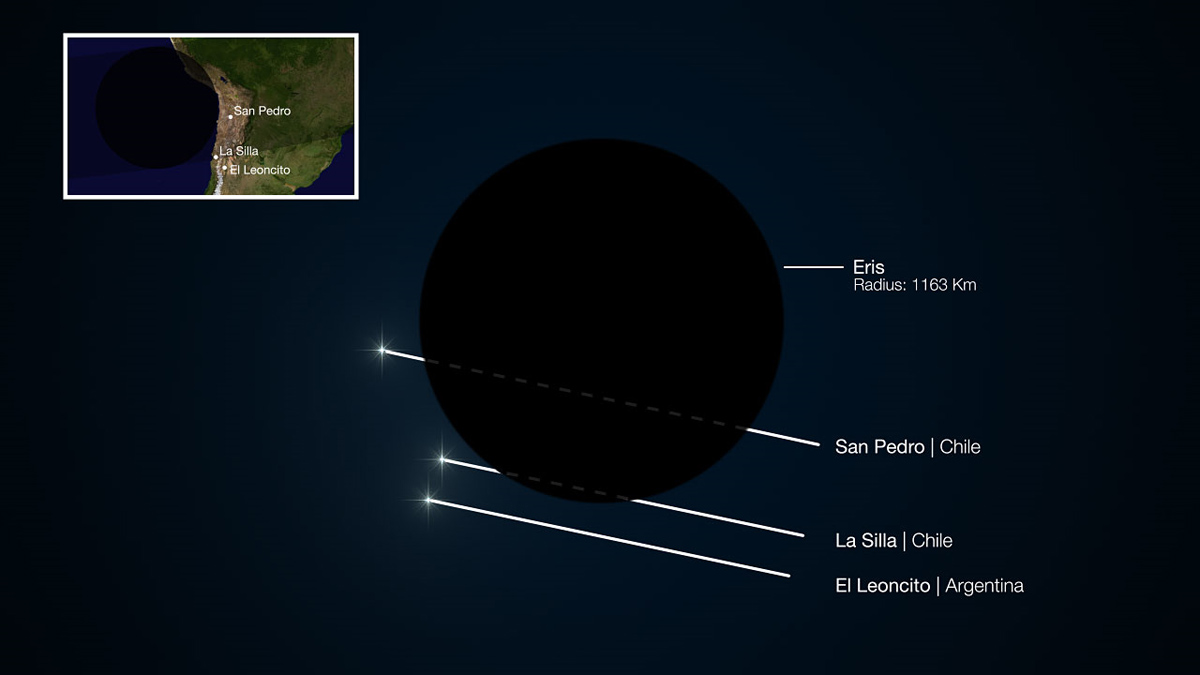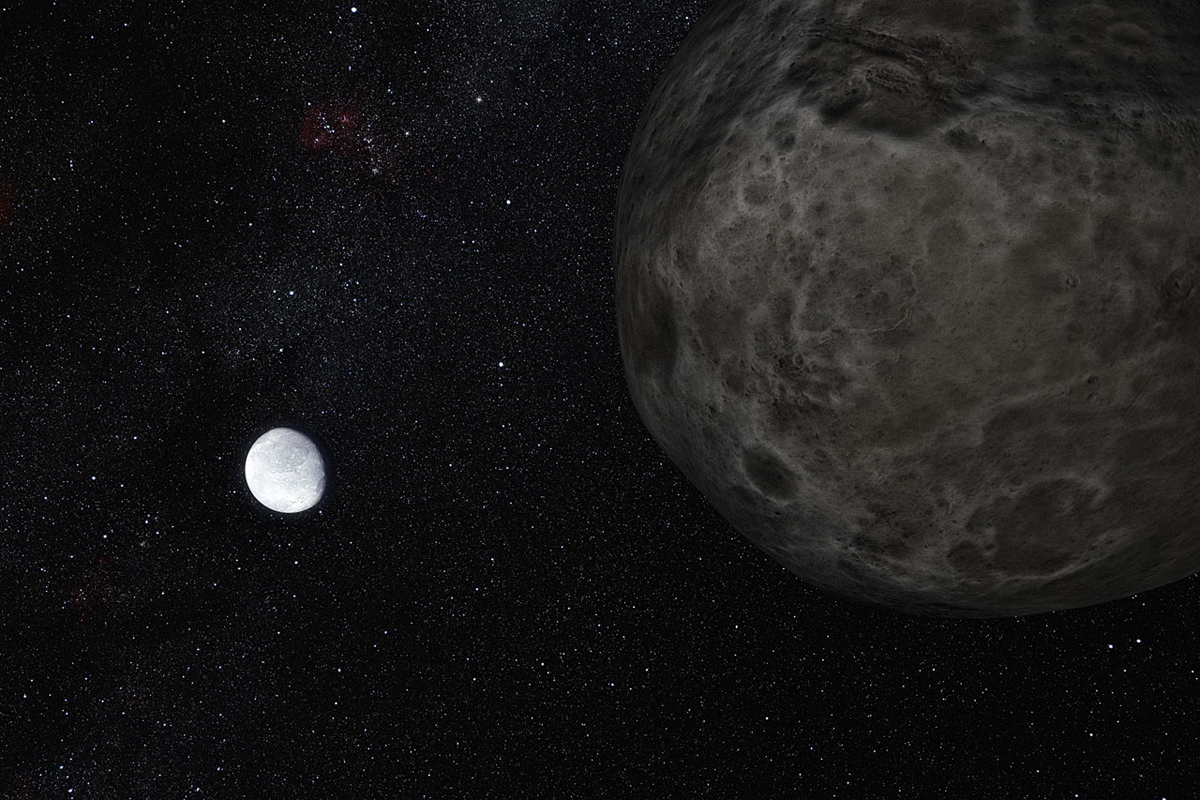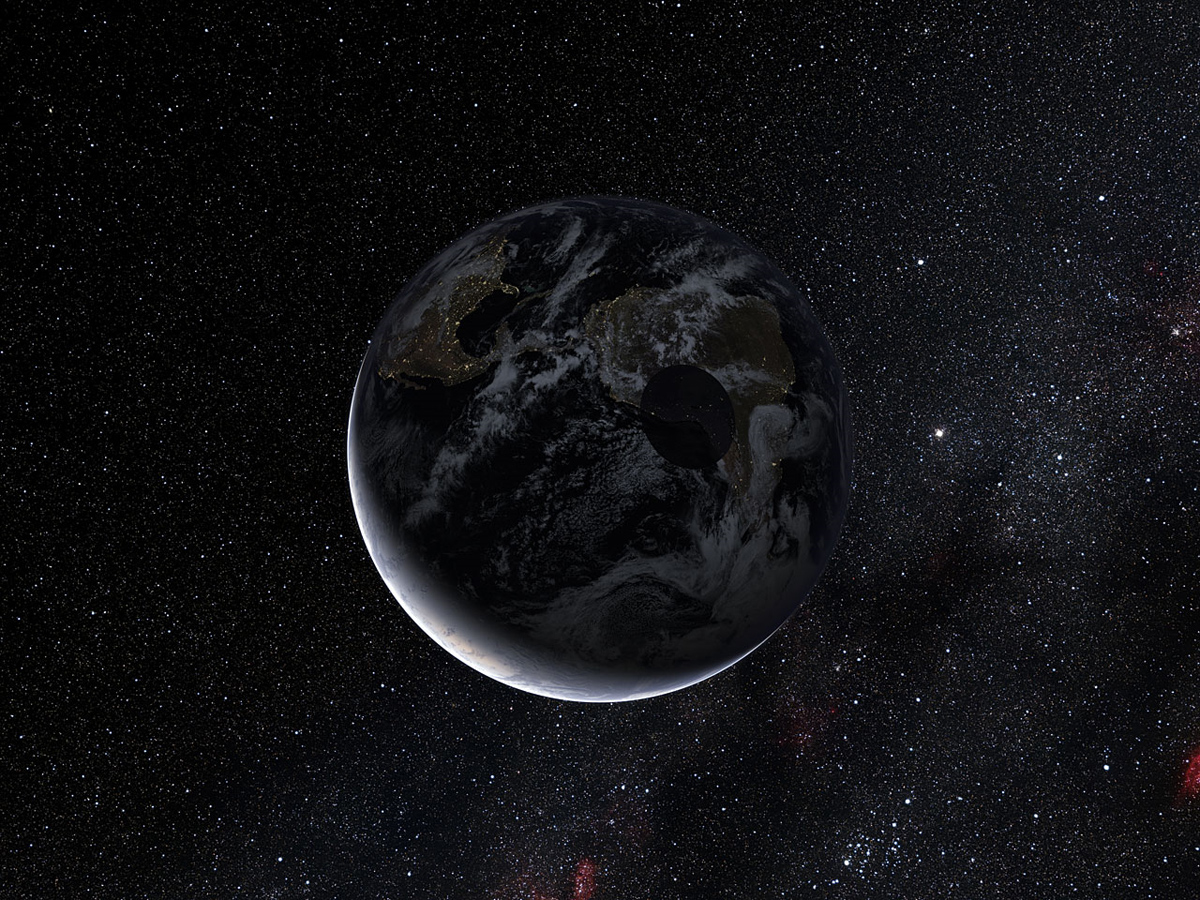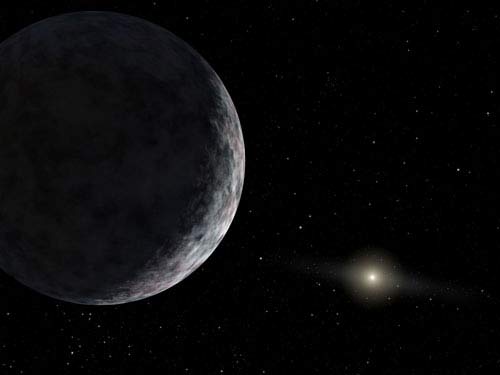Images: Dwarf Planet Eris, Pluto's Cosmic Twin
Artist's Impression of Dwarf Planet Eris
This artist's impression shows the distant dwarf planet Eris. New observations have shown that Eris is smaller than previously thought and almost exactly the same size as Pluto. Eris is extremely reflective and its surface is probably covered in frost formed from the frozen remains of its atmosphere.
Occultation of Dwarf Planet Eris in November 2010
This diagram shows the path of a faint star during the occultation of the dwarf planet Eris in November 2010. Two sites in South America saw the faint star briefly disappear as its light was blocked by Eris and another recorded no change in brightness. Studies of where the event was seen, and for how long, have allowed astronomers to measure the size of Eris accurately for the first time. Surprisingly, they find it to be almost exactly the same size as Pluto and that it has a very reflective surface.
Artist’s Impression of the Dwarf Planet Eris and Moon Dysnomia
This artist's impression shows the distant dwarf planet Eris in the distance with its moon Dysmonia in the foreground. New observations have shown that Eris is smaller than previously thought and almost exactly the same size as Pluto. Eris is extremely reflective and its surface is probably covered in frost formed from the frozen remains of its atmosphere. Dysnomia appears to be a darker and less reflective body.
Dwarf Planet Eris' Shadow Path During November 2010 Occultation
This artist’s impression shows the shadow of the dwarf planet Eris as it was crossing the Earth during the occultation during November 2010. The regions along the path saw a faint star briefly disappear as its light was blocked by Eris. Studies of where the event was seen, and for how long, have allowed astronomers to measure the size of Eris accurately for the first time. Surprisingly, they find it to be almost exactly the same size as Pluto and that it has a very reflective surface.
Artist's Impression of the Dwarf Planet Eris
This artist's impression shows the distant dwarf planet Eris. New observations have shown that Eris is smaller than previously thought and almost exactly the same size as Pluto. Eris is extremely reflective and its surface is probably covered in frost formed from the frozen remains of its atmosphere. The distant Sun appears to the upper right and both Eris and its moon Dysnomia (center) appear as crescents.
The Man Who Killed Pluto: Q & A with Astronomer Mike Brown
Caltech researcher Mike Brown led the team that found the dwarf planet Eris in 2005. The discovery helped spur astronomers to rethink the definition of "planet," and ultimately strip Pluto of its planethood.
Eris: Rival to Pluto
Artist's rendering of Eris, announced in July 2005 by Mike Brown of Caltech. It is more massive than Pluto. The sun is in the background.
Breaking space news, the latest updates on rocket launches, skywatching events and more!
Solar System to Scale (Infographic)
A graphical representation of our solar system to scale - see how far the planets are from the sun in astronomical units.

Space.com is the premier source of space exploration, innovation and astronomy news, chronicling (and celebrating) humanity's ongoing expansion across the final frontier. Originally founded in 1999, Space.com is, and always has been, the passion of writers and editors who are space fans and also trained journalists. Our current news team consists of Editor-in-Chief Tariq Malik; Editor Hanneke Weitering, Senior Space Writer Mike Wall; Senior Writer Meghan Bartels; Senior Writer Chelsea Gohd, Senior Writer Tereza Pultarova and Staff Writer Alexander Cox, focusing on e-commerce. Senior Producer Steve Spaleta oversees our space videos, with Diana Whitcroft as our Social Media Editor.








